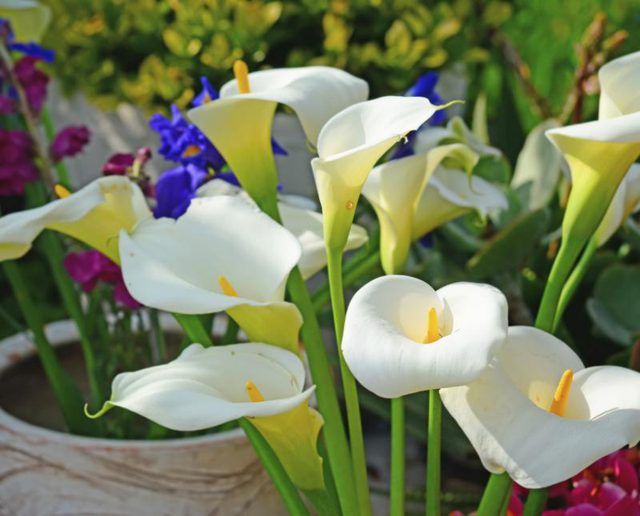Bulbs
Flower Basics
Flower Beds & Specialty Gardens
Flower Garden
Garden Furniture
Garden Gnomes
Garden Seeds
Garden Sheds
Garden Statues
Garden Tools & Supplies
Gardening Basics
Green & Organic
Groundcovers & Vines
Growing Annuals
Growing Basil
Growing Beans
Growing Berries
Growing Blueberries
Growing Cactus
Growing Corn
Growing Cotton
Growing Edibles
Growing Flowers
Growing Garlic
Growing Grapes
Growing Grass
Growing Herbs
Growing Jasmine
Growing Mint
Growing Mushrooms
Orchids
Growing Peanuts
Growing Perennials
Growing Plants
Growing Rosemary
Growing Roses
Growing Strawberries
Growing Sunflowers
Growing Thyme
Growing Tomatoes
Growing Tulips
Growing Vegetables
Herb Basics
Herb Garden
Indoor Growing
Landscaping Basics
Landscaping Patios
Landscaping Plants
Landscaping Shrubs
Landscaping Trees
Landscaping Walks & Pathways
Lawn Basics
Lawn Maintenance
Lawn Mowers
Lawn Ornaments
Lawn Planting
Lawn Tools
Outdoor Growing
Overall Landscape Planning
Pests, Weeds & Problems
Plant Basics
Rock Garden
Rose Garden
Shrubs
Soil
Specialty Gardens
Trees
Vegetable Garden
Yard Maintenance
How to Plant Calla Lilly Bulbs
How to Plant Calla Lilly Bulbs. Calla lilies (Zantedeschia aethiopica) originally hail from the riverbanks of South Africa. Today, you can find it growing everywhere as an annual and as a perennial in U.S. Department of Agriculture plant hardiness zones 8 through 10. This bulb produces scented flowers of various hues, including red, pink, yellow...

Calla lilies (Zantedeschia aethiopica) originally hail from the riverbanks of South Africa. Today, you can find it growing everywhere as an annual and as a perennial in U.S. Department of Agriculture plant hardiness zones 8 through 10. This bulb produces scented flowers of various hues, including red, pink, yellow and white. Plant calla lilies to add a dash of color and smell to your backyard.
You Are My Sunshine
Calla lilies experience the most vigorous foliage growth, and produce the most flowers, when planted in full sun. That's a minimum of approximately six hours of direct sunshine every day. The bulbs do even better if most of that sunlight exposure happens in the morning, so consider choosing a planting site on an east-facing side of your property.
Getting Down and Dirty
Healthy soil creates healthy gardens. Before planting your calla lilies, prepare the soil for success. Break up the soil to a depth of 8 to 12 inches with a spade, then remove any rocks or similar debris. Mix in a couple inches of compost or aged manure, which helps the soil retain moisture and also improves aeration. Finally, stir in 2 pounds of bonemeal for every 50 square feet of flowerbed you're preparing. The phosphorus in bonemeal enhances bulb plant health. Alternatively, you can use a 5-10-5 fertilizer on clay or loam soil or a 5-10-10 fertilizer on sandy soil, applied at a rate of 1 1/2 pounds per 50 square feet.
The Perfect Planting Plans
Your garden is ready for your calla lilies as soon as the last frost date in your region has passed. Some gardeners start with calla lily bulbs, either purchased from a garden store or dug up at the end of the previous growing season and stored in a cool, dark, dry place. Plant the bulb -- technically not a true bulb, but a rhizome root -- 4 to 6 inches deep in your prepared soil. If you're planting more than one calla lily, separate each bulb by approximately 24 inches. If you're instead using calla lilies that have already been started in pots, which you can find in many nurseries and greenhouses, carefully remove the lily from the pot by turning the pot on its side and wiggling the plant gently to slide it out of its container. Dig a hole in your prepared soil that is the same size as the lily's original pot. Place the lily into the hole and fill in the hole, burying the lily at the same depth that it was buried in its pot. If transplanting multiple lilies, space them apart by approximately 24 inches.
Rain, Rain, Don't Go Away
In the wild, you can find calla lilies growing along streams and riverbanks. That gives you a hint that this plant prefers consistently moist soil conditions to thrive. Water your calla lilies twice a day or as necessary to keep the soil moist to a depth of 8 to 12 inches. If it rains a lot in the area where you live, you can decrease watering frequency. Watch the lilies for signs of drought stress, signaled by wilting or yellowing of its leaves, and increase watering frequency if required.